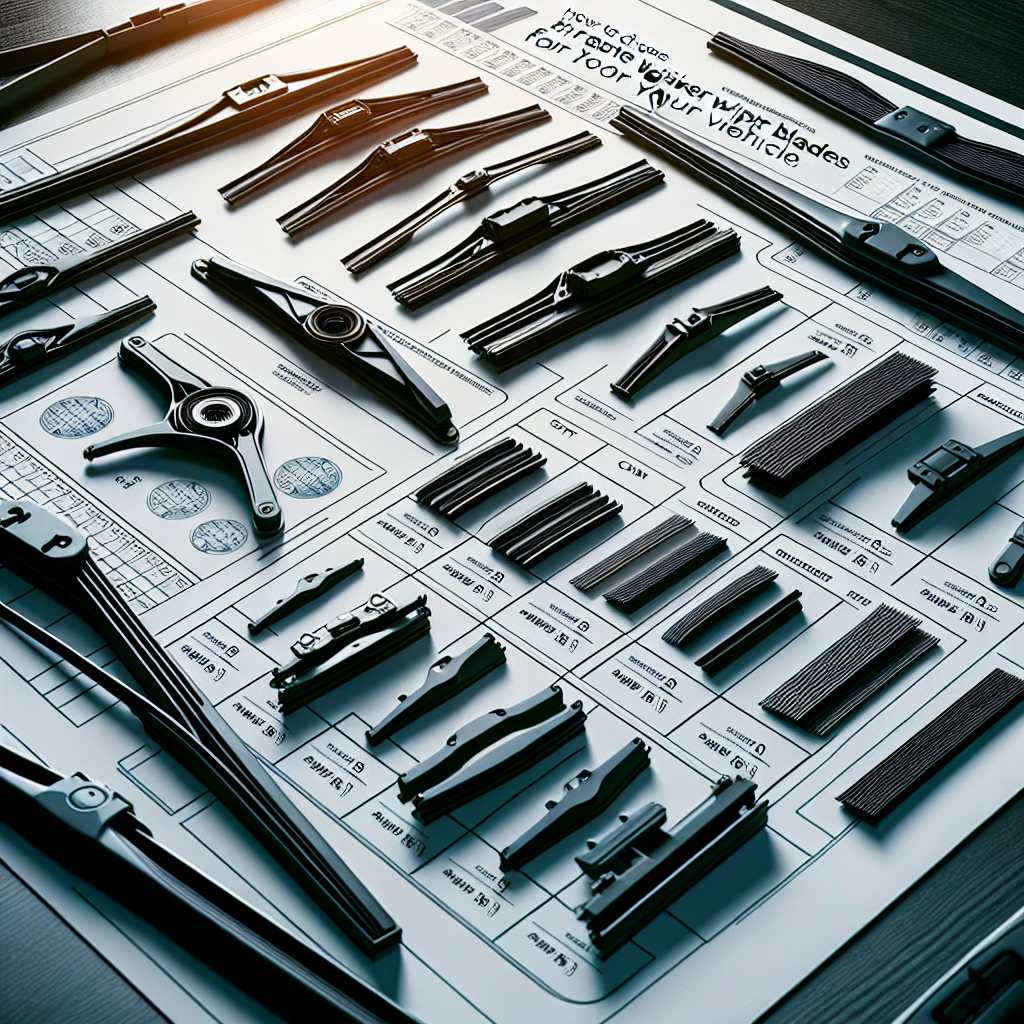When it comes to maintaining your vehicle, one of the most often overlooked but essential components is the wiper blades. Good wiper blades are pivotal for ensuring clear visibility during harsh weather conditions like rain, snow, or fog. By providing crucial visibility, especially during inclement weather, they significantly contribute to driving safety. However, with the myriad of options available on the market, choosing the right wiper blades can be daunting. Here’s a guide to help you make an informed decision on your next set of wiper blades.
Types of Wiper Blades
Wiper blades generally come in three types: conventional, beam, and hybrid.
Conventional Blades: These are the traditional, most commonly used type of wiper blades. They feature a metal framework that supports the rubber blade. While they are generally cost-effective, they may not offer the same level of performance as newer types in heavy rain or snow.
Beam Blades: Beam blades skip the metal framework and offer a sleeker, more aerodynamic design. They conform better to the curvature of the windshield, providing more consistent contact and thus better wiping performance, especially in challenging weather conditions. Due to their design, they are more durable and less likely to suffer from snow and ice buildup.
Hybrid Blades: As the name suggests, hybrid blades combine the best features of both conventional and beam blades. They offer the structural support of conventional blades but with the aerodynamic benefits and performance reliability of beam blades. These are an excellent middle-ground option for many drivers.
Key Features to Consider
When selecting wiper blades, you’ll want to consider several key features to ensure you’re getting a product that meets your needs.
Material Quality: The rubber or silicone material of the wiper blade directly impacts its performance. Rubber blades are typically less expensive but may wear out faster, especially in extreme temperatures. Silicone blades, on the other hand, are more durable and provide better performance, but they tend to be pricier.
Size and Fit: Make sure to choose the correct size for your vehicle. Wiper blades come in various lengths, so consult your vehicle’s owner manual or measure the old blades to ensure you get the right size. Ill-fitting wiper blades can impair visibility and reduce effectiveness.
Ease of Installation: Some wiper blades come with quick-connect systems that make installation a breeze. Others may require more intricate steps. If you’re not particularly handy, opting for blades that are easy to install could save you a lot of hassle.
Durability and Longevity: Some wiper blades come with a Teflon or graphite coating that enhances their longevity and provides smoother wiping action. Weather-resistant blades are also available for those who live in areas with extreme weather conditions.
Performance in Various Conditions
Different wiper blades excel under different conditions. Here’s what to consider based on your driving environment:
Winter Conditions: If you often drive in snowy or icy conditions, winter wiper blades are worth considering. These blades usually feature a protective rubber shell that prevents the buildup of ice and snow.
Heavy Rain: Beam blades offer superior performance in heavy rain due to their design, which ensures even pressure across the blade. This means fewer streaks and better visibility.
Dry and Sunny Climates: In hot, dry conditions, rubber blades can degrade faster. Silicone blades tend to last longer and perform better in direct sunlight.
Cost vs. Value
While it’s tempting to go for the cheapest option, investing a little more in high-quality wiper blades can pay off in the long run. Premium blades offer better performance and durability, potentially saving you from having to replace them frequently.
How Often to Replace Your Wiper Blades
Experts generally recommend replacing your wiper blades every six months to a year. Signs that it’s time to replace them include streaking, chattering, or splitting. Regularly inspect your blades for any signs of wear and tear to maintain optimal visibility and safety.
Where to Buy
You can purchase wiper blades at auto parts stores, large retailers, and online marketplaces. Make sure to buy from a reputable vendor to ensure you’re getting genuine, high-quality products.
Conclusion
Choosing the right wiper blades is a crucial aspect of vehicle maintenance that directly impacts your driving safety. By understanding the types, key features, and performance of different wiper blades, you can make an informed decision that best suits your needs and driving conditions. Don’t skimp on this essential component; your safety depends on it.


